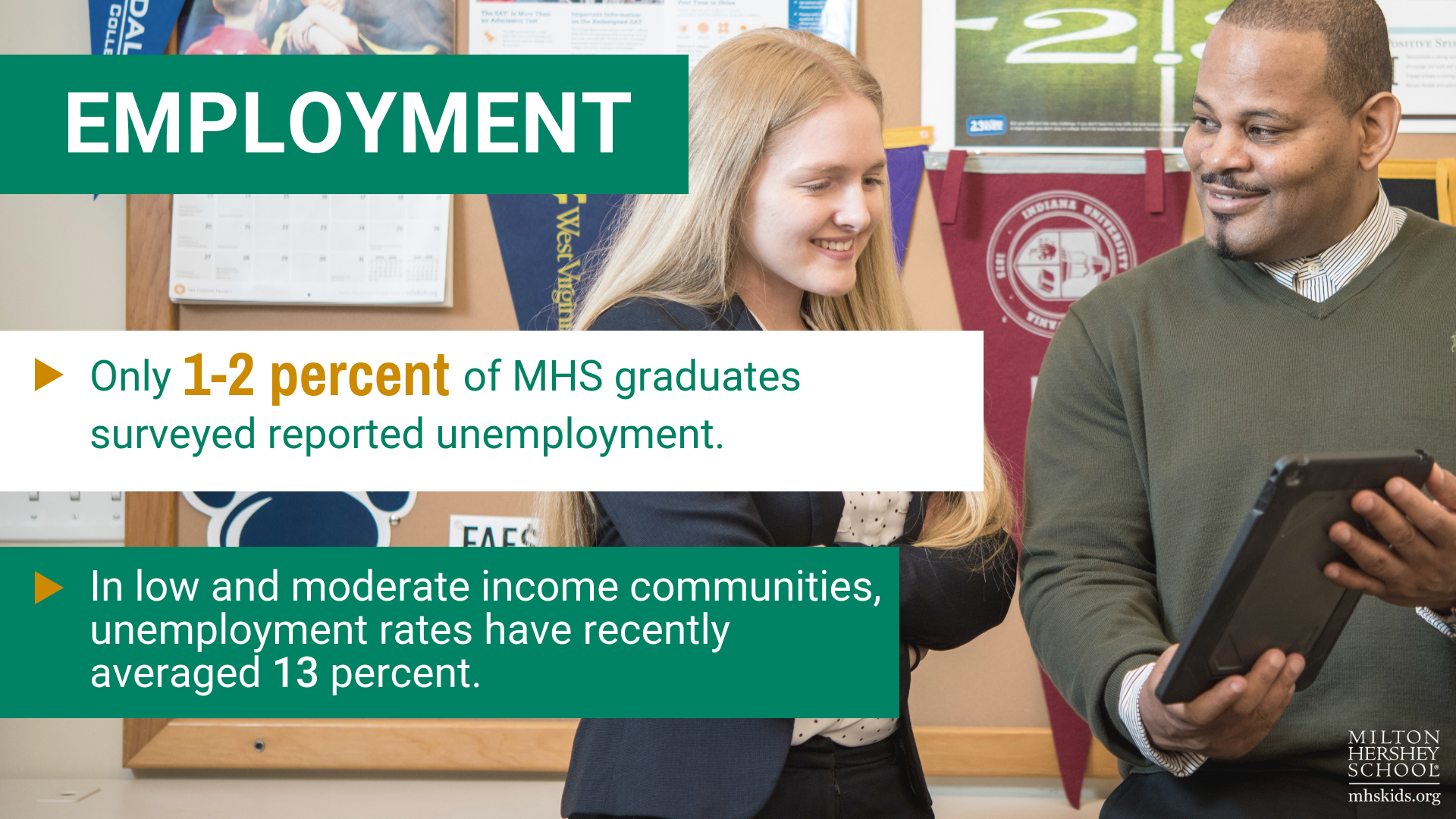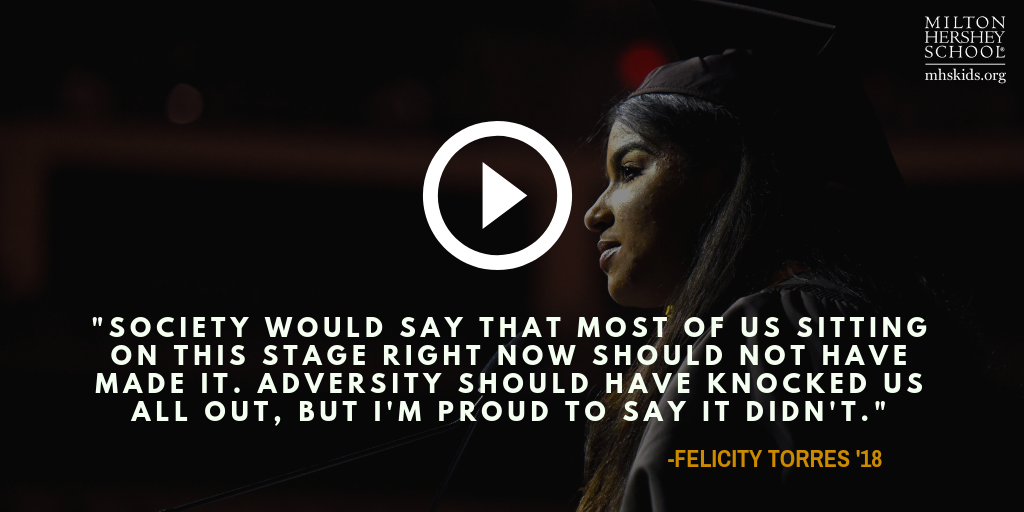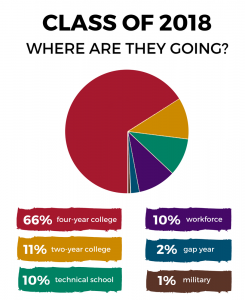Measuring Socioeconomic Indicators for Children from Poverty
At Milton Hershey School, low-income students have the opportunity to build brighter futures and break the cycle of poverty. By measuring intergenerational social mobility, we look at the association between parents’ and adult children’s socioeconomic standing through different indicators such as educational attainment, employment, income, occupational status, and other social status indicators to better guide our students long after graduation.
Employment
After achieving their postsecondary goals, MHS students continue to make their marks on society by pursuing rewarding and meaningful careers. Of the MHS graduates surveyed, only 1 to 2 percent reported unemployment.
Income
Part of intergenerational social mobility is ensuring MHS students have the education and foundation to support themselves and their families. Over two Graduate Survey iterations, the median household income for MHS graduates was in the $50,000 to $70,000 range.
Educational Attainment
For many low-income students who are pursuing higher education, they will be the first in their family to receive a college degree. Through the MHS Graduate Programs for Success (GPS) Division, dedicated career counselors and transition specialists support underprivileged students and alumni of all ages as they make academic, financial, social and emotional decisions post-graduation.
On average, 38 percent of MHS graduates have completed their bachelor’s degree and 15 percent have a professional degree.
Learn about the MHS Class of 2018:
Source:
- NCCP Comparative Analysis of the Well-Being of MHS Students and Low-Income Youth in the U.S.
- MHS Graduate Surveys (Data collected from respondents in the Classes of 2000, 2004, and 2008).






